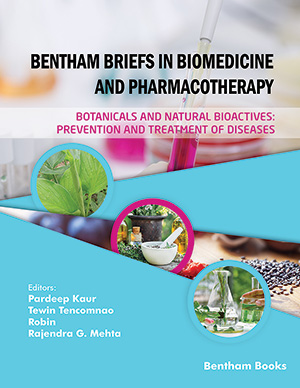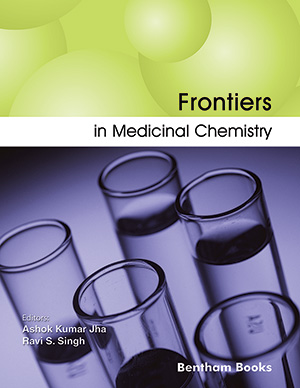Abstract
Aims and Objectives: The intake of Stachys sieboldii MIQ. has been associated with relieving inflammation and maintaining optimal gut health function. We investigated the diversity and composition of microflora in feces of S. sieboldii MIQ.-fed mice. In addition, we evaluated the production of major cytokines (Interleukin-6 and -10) related to inflammation and fatty acid composition of several tissues.
Materials and Methods: 16S ribosomal DNA sequencing-based microbiome taxonomic profiling analysis was performed using EzBioCloud data base. The total RNA from the mesenteric lymph node was isolated and then synthesized with prime script 1st strand cDNA synthesis kit. Quantitative real-time PCR was performed on cDNA samples using the SYBR™ Green PCR Master Mix.
Results: Mice fed on S. sieboldii MIQ. showed significantly reduced counts of aerobic and coliform in the feces compared with control. 16S rDNA sequencing analysis of fecal samples showed that supplementation with S. sieboldii MIQ. increased beneficial intestinal microflora (Ruminococcaceae and Akkermansia muciniphila) and decreased the community of harmful microflora (Enterobacteriaceae, including Escherichia coli and Bacteroides sp.) in feces compared with that in the control (P<0.05 for all). Mice showed a significantly lower mRNA expression of cytokines IL-6 and IL-10 in mesenteric lymph node compared with that in control (P<0.05). The fecal fatty acid composition in the S. sieboldii MIQ. group showed a higher percentage of 6:0 and 18:2n-6 compared with that in the control group (P<0.05). The percentages of 6:0 and 20:3n-6 fatty acids were also significantly higher in the intestines of S. sieboldii MIQ. group (P<0.05). No differences were revealed between the two groups in terms of the percentages of total saturated, monounsaturated, n-6 and n-3 polyunsaturated fatty acids found in feces and tissues.
Conclusion: The present results showed that supplementation of mice with S. sieboldii MIQ. increased beneficial gut microflora and decreased harmful microflora. Moreover, lower mRNA expression of pro-inflammatory cytokine IL-6, and anti-inflammatory cytokine IL-10 in the mesenteric lymph node of supplemented mice might be associated with the lower abundances of harmful fecal microflora.
Keywords: Stachys sieboldii MIQ., intestinal microflora, 16S rDNA sequencing, Pro- and anti-inflammatory cytokines, fatty acid composition, coliforms.
[http://dx.doi.org/10.9799/ksfan.2014.27.1.010]
[http://dx.doi.org/10.7856/kjcls.2017.28.2.203]
[http://dx.doi.org/10.1254/jjp.65.143] [PMID: 7526020]
[http://dx.doi.org/10.1016/j.talanta.2006.03.027] [PMID: 18970754]
[http://dx.doi.org/10.1016/j.carbpol.2015.02.026] [PMID: 25857958]
[http://dx.doi.org/10.1016/j.foodchem.2010.12.143] [PMID: 23140683]
[http://dx.doi.org/10.1016/j.fct.2013.01.041] [PMID: 23416131]
[http://dx.doi.org/10.1016/j.carbpol.2013.08.073] [PMID: 24274486]
[http://dx.doi.org/10.1016/j.carbpol.2014.05.077] [PMID: 25129724]
[http://dx.doi.org/10.1016/j.phrs.2012.10.020] [PMID: 23147033]
[http://dx.doi.org/10.1136/gutjnl-2015-309618] [PMID: 26069274]
[http://dx.doi.org/10.1016/j.foodhyd.2017.12.026]
[http://dx.doi.org/10.1126/science.aao5774] [PMID: 29590046]
[http://dx.doi.org/10.1038/ejcn.2011.141] [PMID: 21811294]
[http://dx.doi.org/10.1080/19490976.2017.1290756] [PMID: 28165863]
[http://dx.doi.org/10.1016/j.curtheres.2011.11.003] [PMID: 24648594]
[http://dx.doi.org/10.1007/s00535-014-0953-z] [PMID: 24652102]
[http://dx.doi.org/10.3389/fcimb.2017.00455] [PMID: 29124041]
[http://dx.doi.org/10.1093/jn/123.11.1939] [PMID: 8229312]
[http://dx.doi.org/10.4315/0362-028X-64.11.1841] [PMID: 11726171]
[http://dx.doi.org/10.1099/ijsem.0.001755] [PMID: 28005526]
[http://dx.doi.org/10.1016/j.molbiopara.2010.06.014] [PMID: 20603157]
[PMID: 13428781]
[PMID: 14221106]
[http://dx.doi.org/10.1007/BF02637068] [PMID: 8729111]
[http://dx.doi.org/10.3748/wjg.v20.i4.908] [PMID: 24574765]
[http://dx.doi.org/10.1128/CVI.00406-06] [PMID: 17360855]
[http://dx.doi.org/10.1039/C6FO01290F] [PMID: 28001151]
[http://dx.doi.org/10.2527/1997.7551244x] [PMID: 9159271]
[http://dx.doi.org/10.1006/jsre.1993.1107] [PMID: 7692134]
[http://dx.doi.org/10.1016/S0065-2776(08)60449-6] [PMID: 8073945]
[http://dx.doi.org/10.1002/mnfr.201700954] [PMID: 29341443]
[http://dx.doi.org/10.3892/etm.2013.1280] [PMID: 24223664]
[http://dx.doi.org/10.1371/journal.pone.0114277] [PMID: 25479553]





























